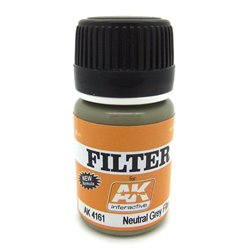Generally speaking, an up line travels towards a major town or city and a down line away from it, on main lines in...
No products
Product successfully added to your shopping cart
There are 0 items in your cart. There is 1 item in your cart.
Search Tips
Christmas and New Year
We are dispatching orders every weekday apart from Christmas Day, Boxing Day and New Year's Day.
If you select next day delivery at checkout, please note deliveries are not made on public holidays or Sundays.
The shop in Sandown is open 23rd and 24th December, then closed from 25th December, reopening on 30th December.
What is "post-shading" and how is it typically used?
Post-Shading refers to a technique used to add depth, definition and weathering effects to a model's paint job. It is a method commonly employed in aircraft, armour and vehicle modelling, as well as other subjects such as ships or figures.
Post-shading involves applying additional layers of paint or pigments to a base coat in order to create shadows, highlights, and tonal variations. The technique aims to replicate the natural play of light and shadow on the surface of the model, making it appear more realistic.
The process usually involves the following steps:
- Base coat: begin by applying the base coat, which is typically the main colour of the model. This establishes the foundation for the subsequent shading effects.
- Mixing colours: create different shades of the base colour by mixing it with darker or lighter tones. These shades will be used to accentuate specific areas of the model.
- Thin the paint: dilute the mixed colours with an appropriate thinner or medium to achieve a transparent consistency. This helps in achieving subtle shading effects rather than solid layers.
- Airbrush application: use an airbrush to apply the thinned paint in a controlled manner. Focus on areas where shadows would naturally occur, such as panel lines, recesses and corners. Gradually build up the intensity of the shading, starting with lighter shades and progressing to darker ones.
- Blending: to create smooth transitions between the shaded areas and the base coat, use an airbrush to lightly spray a mix of the base colour and the shading colour over the edges where they meet. This blending technique helps to soften the contrast and create a more realistic appearance.
- Finishing touches: after the post-shading is complete, additional weathering effects such as washes, dry brushing, chipping or streaking can be applied to further enhance the model's realism.
Post-shading can be a subjective and creative process and the specific techniques and colours used may vary depending on the modeller's preferences, the subject being modelled and the desired effect. With practice and experimentation, it can become a highly effective process to add tonal variations and depth to a model.
Click here to receive the tips weekly in your mailbox. You can unsubscribe at any time.









